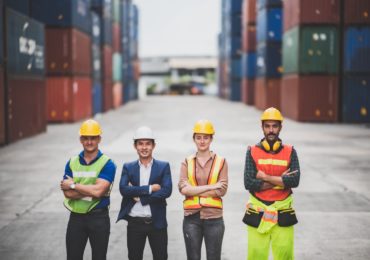Read Time: 4 min.
Just about every industry has been impacted in some way by the global pandemic. In the past year, logistics and freight have probably seen the most disruption, underscoring the need for shippers to work with experienced logistics professionals to help them navigate the challenges.
Benefits of Digital Freight Matching
With today’s economic uncertainty, fluctuating fuel costs, capacity issues, and a higher than usual demand adding extra layers of complexity, a simplified solution is required.
Enter digital freight matching—a strategy that some refer to as the “Uberization” of freight, or Truck-as-a-Service (TaaS). Simply put, digital freight matching is a way of balancing the load across carriers without making the process more complicated than it already is.
Some of the benefits of digital freight matching include:
- Loads get covered faster
- Cuts down on back-and-forth communication and phone calls
- Automated process: you always get the right carriers for the load
- Peace of mind that you’re working with a reputable carrier
- No need to fax or email documents back and forth
How Digital Freight Matching Works
Digital freight matching leverages web apps or mobile apps to match shipper demand with the appropriate carriers. Most digital freight matching apps integrate directly with the carrier’s own TMS, supporting a faster time-to-value for all parties.
How To Calculate The Freight Shipping Costs

Shippers post their loads on the freight matching service, complete with detailed information on size, weight, dimensions, contents, and all associated documentation. Carriers then click on the load to accept it, then proceed to pick it up. Many people in the industry have likened the process to a dating app for freight because it marries the right loads with the right carriers—only it’s better—because you don’t have the hassle of the inevitable missteps inherent in online dating.

Digital Freight Matching Answers Today’s Shipping Needs
As demand grows, freight matching solutions themselves are becoming more flexible, which is a massive help to all parties as they continue to operate in a largely unpredictable environment. Of course, there will always be unforeseen disasters, but the more steps we can remove from the workflow, the better it is for everyone.
The best digital freight matching solutions go leaps and bounds beyond simple load and lane matching. Bills of lading, invoices, contracts, and more can be attached and associated with each shipment, meaning that once the carrier accepts the job, they have everything they need to fulfill it—no phone calls, emails, or further discussion required. The shipper would upload their documents once and it’s done. Once the load is picked up, detailed tracking information is available from the same central dashboard.
For the carriers, the scenario is equally as attractive. Carriers often look for a specifically sized load to fill empty spaces, and digital freight matching enables them to accomplish that without any extra effort whatsoever.
The Bottom Line
A couple of years ago, nobody could have fathomed the rapid-fire changes we’ve experienced in the shipping industry. Fortunately, the technology was already in place to support the extra demand and changing needs of a post-pandemic world. Digital freight matching is just one way we’re keeping goods moving and preserving margins along with them.
To learn more about digital freight matching and how DTS World Cargo helps, reach out today.




